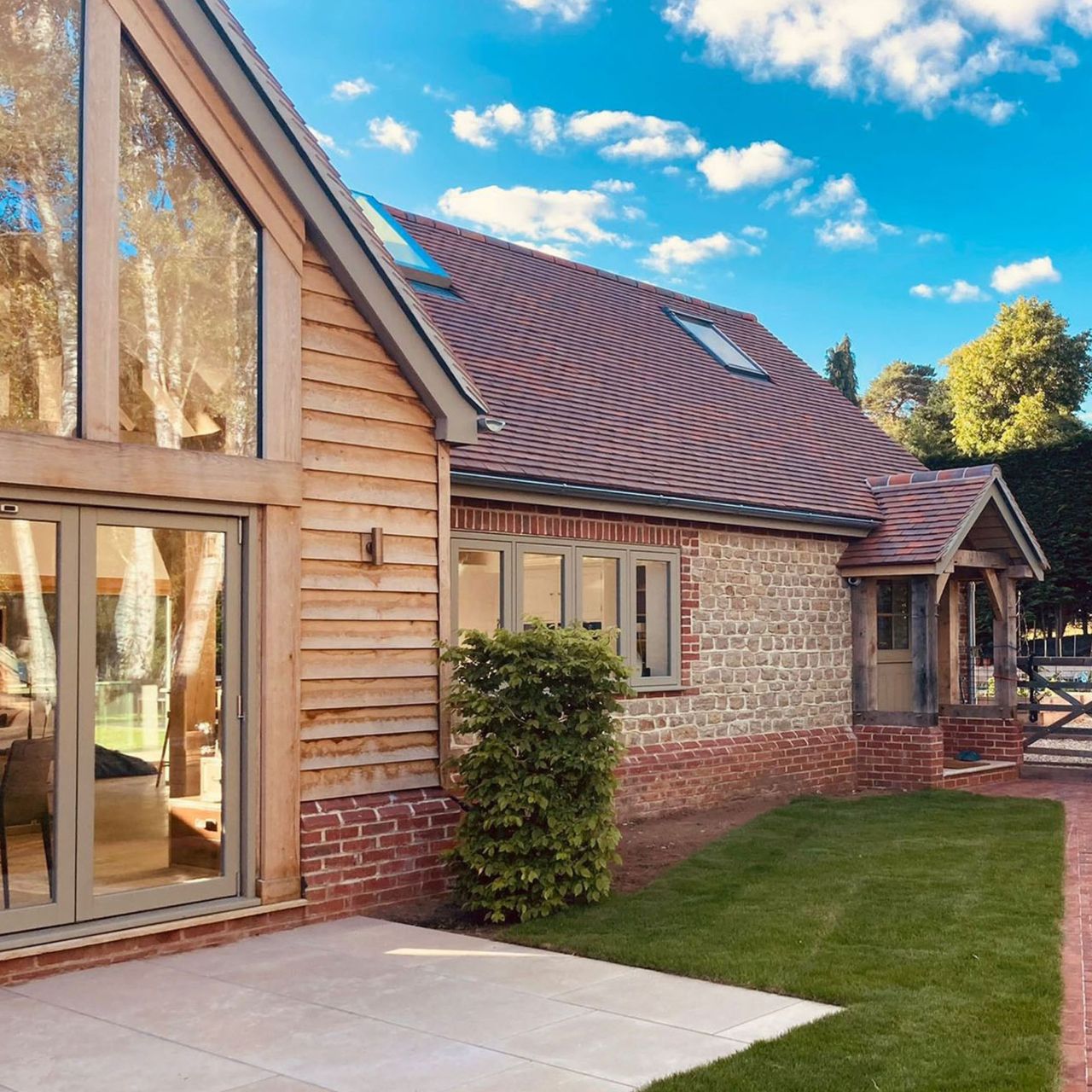
Your roof plays a huge rule in establishing your home’s aesthetic, so if you’re updating your roof as part of a bigger home renovation it’s important to select a covering that sits beautifully alongside the rest of the external materials.
The scope of the works you’re taking on might range from rectifying a few broken or damaged tiles to replacing the roof, and covering, entirely. If you’re only replacing a few tiles, it’s important to find as close a match to the existing units as possible.
If you’re re-roofing the entire property, however, there are numerous factors to bear in mind when it comes to specifying new tiles, including the size and shape of the units, as well as the pitch of the roof you’re covering. You’ll also need to check whether your choice of roof tile will be dictated by any local planning requirements, as well as factoring in how much budget you have available for your roof upgrade.
Here, we take a closer look at the options for roof tiles, highlighting the advantages and key considerations to bear in mind for each.
What types of roof tiles can you get?
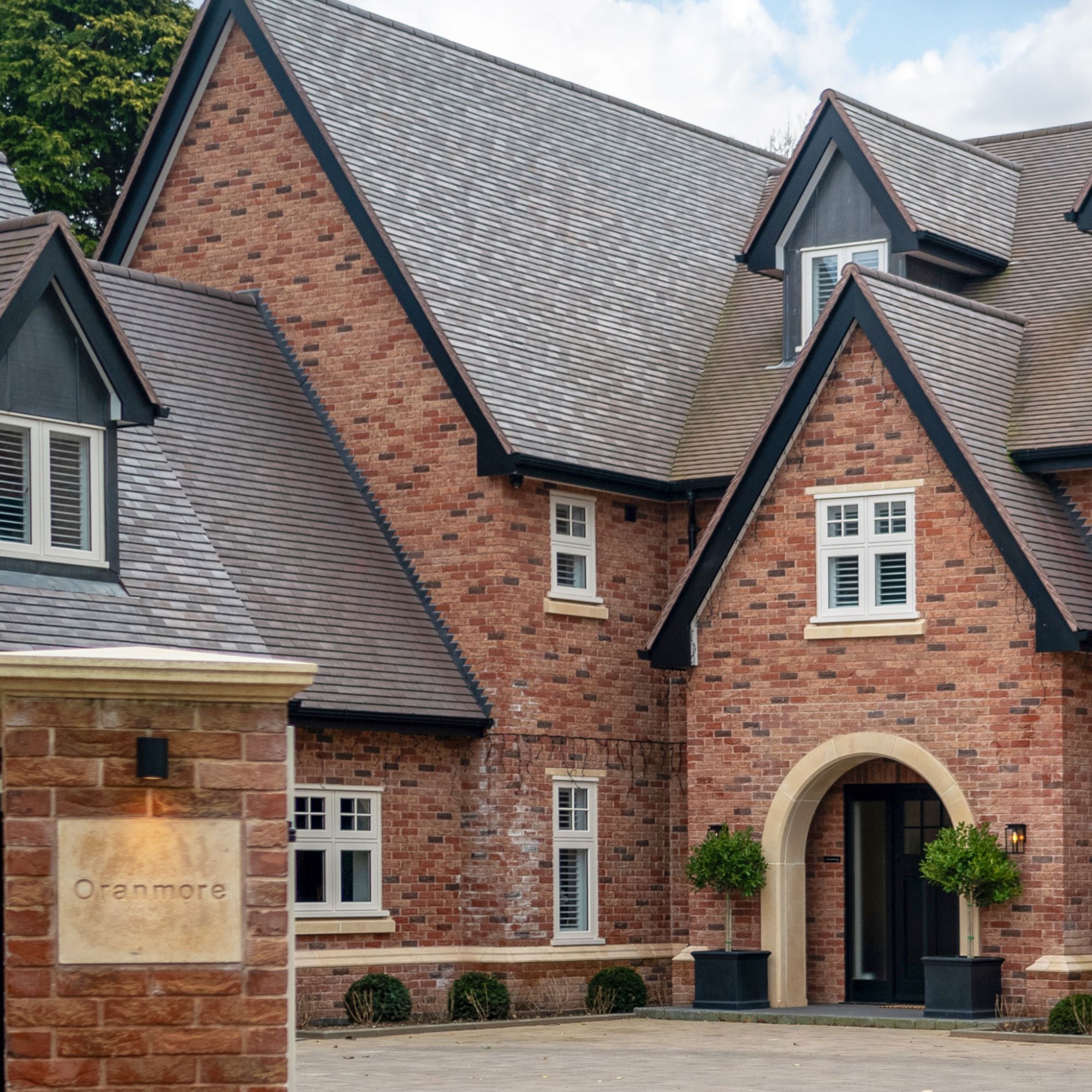
Whether you are replacing a couple of tiles, roofing an extension or replacing your roof entirely, you'll need a clear understanding of the different types of roof tiles available.
Concrete
Fabricated to a uniform size, colour and finish, the crisp, clean aesthetic of concrete tiles makes them a favourite choice for modern houses. On the plus side, they come in a huge range of different shades to suit your home, and thanks to the consistent dimensions of concrete tiles, they’re also easy to install – especially if you choose interlocking units that click together for a quick and easy job.
Another advantage of concrete tiles is the cost, as they’re cheaper than materials like slate and slate – expect to budget from £30 per m2 for concrete units, on a supply only basis.
If you’re after a low-maintenance solution, concrete is a smart option – simple things to look out for include moss and dirt build-up that needs to be cleaned every three to five years, on average. Providing you carry out the right upkeep, you can expect concrete tiles to last between 30 and 70 years.
On the downside, concrete lacks the natural colour variations you’d get with clay or stone tiles. Plus, concrete tiles are not through-coloured in the same way as clay or slate units, so the initial shade of the tiles is likely to fade over time. They’re also heavier than clay, so if you’re switching clay units for concrete, your roof might require some form of structural reinforcement.
Clay
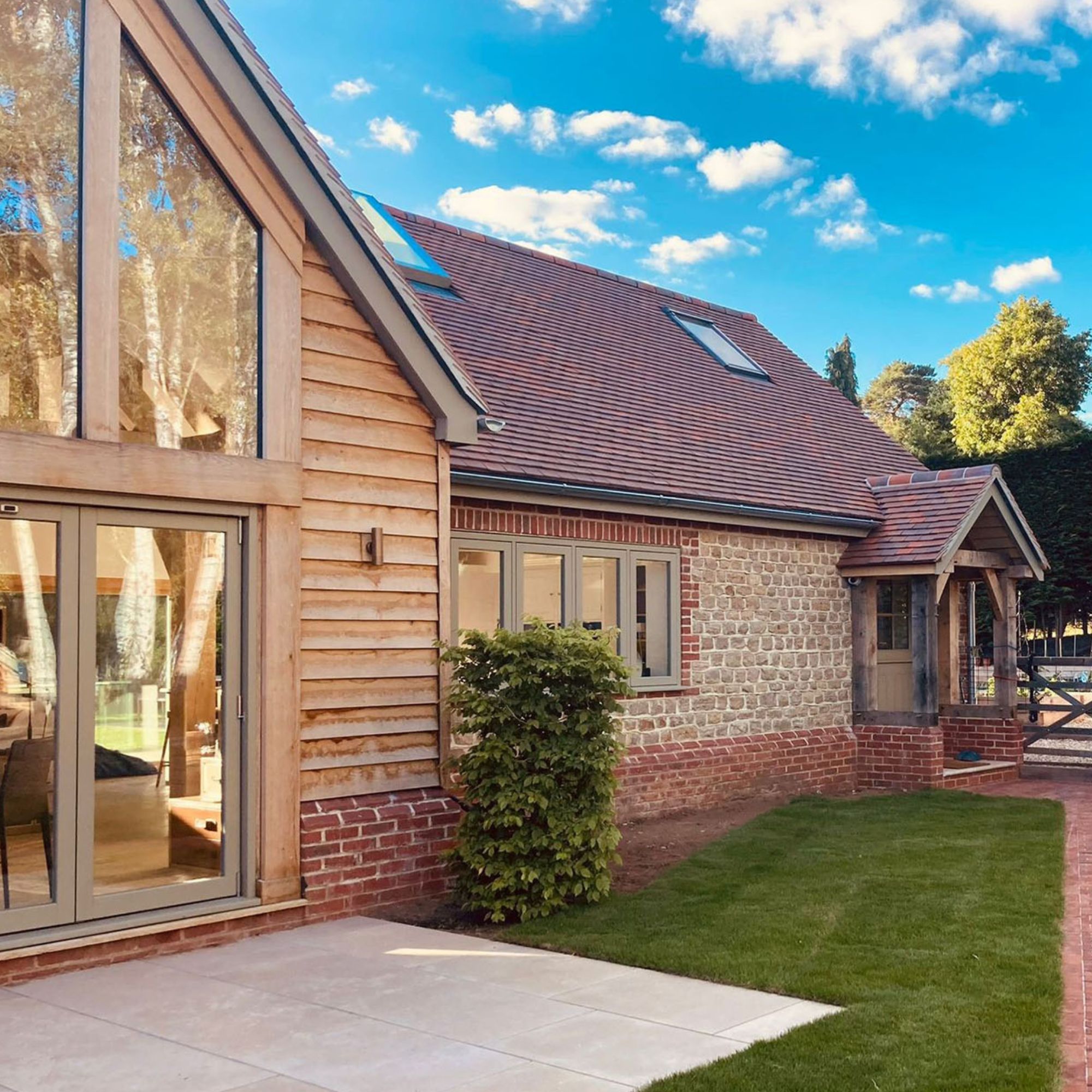
If you want a characterful look, clay tiles might be the go-to option for your project. 'Roof tiles made from clay possess a natural beauty that can continue to add character and value to a roof from one generation to the next,' says Alastair Holding from Dreadnought Tiles. 'Observing old clay roofs around the country, it’s easy to see how plain clay tiles bring individuality and warmth to a property.'
Clay tiles come in a broad spectrum of colours, from warm reds to rich blues. As the tiles are made from a natural material, the colour won’t fade over time due to exposure to UV light. Numerous shapes are available, too, ranging from crisp plain tiles to S-shaped pantiles, through to more ornate designs like bullnose and club profiles.
Machine-made and characterful hand-crafted clay tiles are available, which means they suit an array of homes. 'As plain clay tiles have been an integral and cherished part of the English built environment for centuries, they’re frequently used in listed buildings and houses within Areas of Outstanding Natural Beauty and Conservation Areas, where strict planning regulations require replacement tiles to match the originals,' says Alastair.
It's worth checking your roof for any broken or missing tiles on a regular basis, as well as paying attention to any buildup of debris, leaves, moss and algae growth that needs to be cleaned away. A well-maintained clay tile roof can last above 100 years.
Roof pitch is a key consideration when specifying clay tiles – low pitches should typically be avoided. 'This is because clay tiles overlap on the roof to allow water to drain off quickly, but on low pitches, the increased risk of pooling can lead to water ingress,' says Alastair. Some modern interlocking tiles work at a pitch of 15°, though a pitch of any less than that might work better with another type of tile.
Expect to pay a minimum of £40 per m2 for machine-made units and as much as £80 per m2 for hand-made products.
Slate
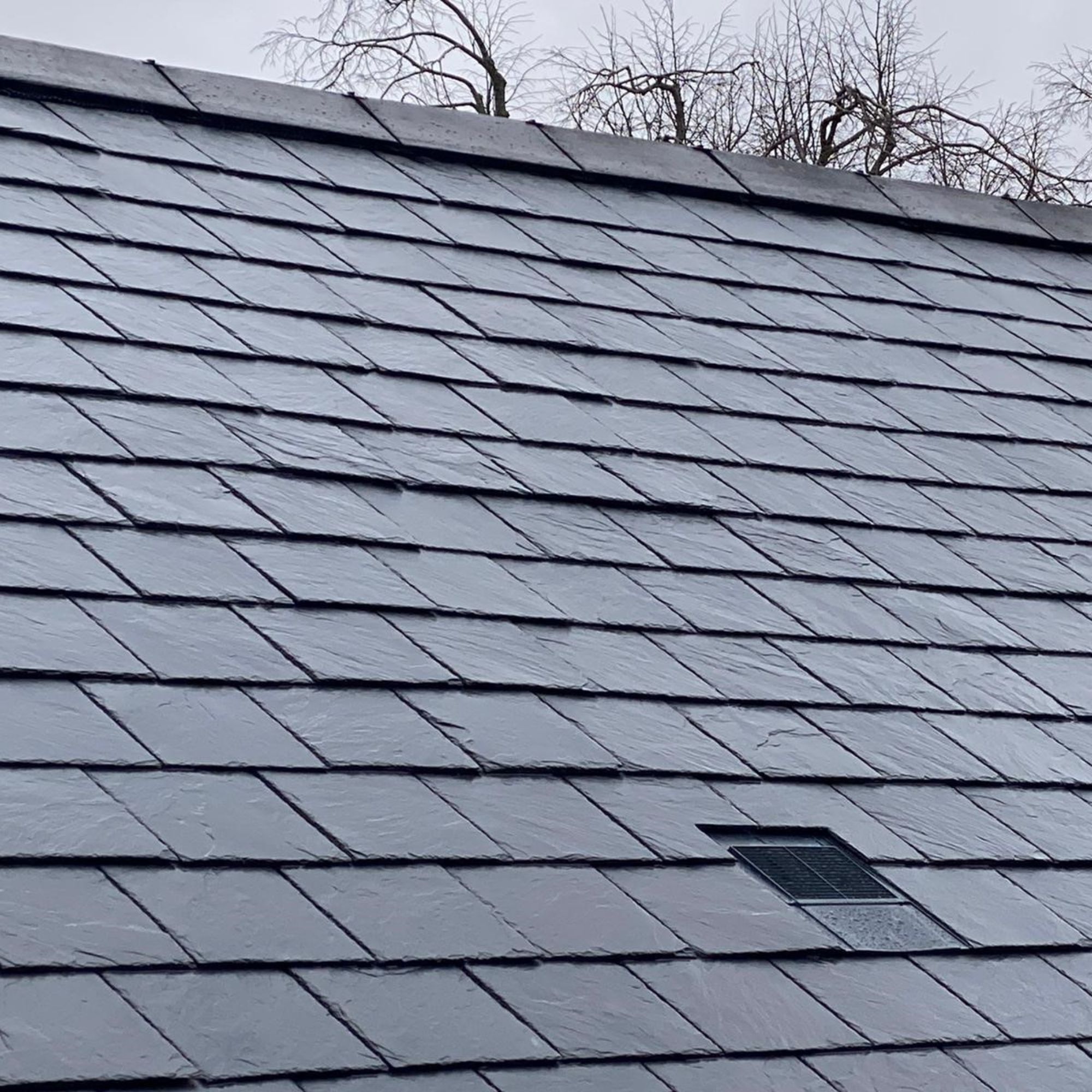
Thanks to the natural variations in colour and grain across the surface of each tile, the natural appearance of slate makes it a desirable option for traditional and contemporary homes. Depending on the source quarry, you can find slate tiles in shades ranging from deep blue-grey to purple and green.
'Unlike concrete or clay tiles, slate has a naturally split, fine-grained finish that adds elegance and depth,' says Rosie Connor from JRC Slate. 'It’s the difference between a tailored suit and an off-the-peg outfit – both do the job, but one’s unmistakeably premium.' Slate tiles work beautifully on period properties and traditional rural buildings. 'That said, a modern slate roof can also elevate contemporary architecture,' says Rosie.
Durability and an impressive service life are two of slate’s main advantages – you can expect well-maintained slate tiles to last 100+ years, with premium slates offering up to 150 years. Slate offers good sustainability credentials, too, as it the tiles can be recycled at the end of their useful life.
Slate is a premium product, so high-quality tiles come with the price tag to match. According to Checkatrade, the average stone slate roof cost is around £160 to £210 per m². Slate is heavy, too, so you’ll need to check whether your roof structure needs reinforcing before the tiles are installed and factor this into the costs.
When it comes to assessing the quality of your tiles, the location they were quarried in is important. Those sourced from Cumbria, Wales or Cornwall are typically premium quality. Imported products can be more cost-effective, though it’s important to check they have been tested to BS EN12326 standards.
'Homeowners need to thoroughly vet the installer,' advises Ben Fernandez Fontan from Galex – Iconic Slate. 'Installing slate is an art, requiring skill and many years of training and experience. Ideally, see some of their previous slate projects. Do the homework to limit the possibility of a poorly installed roof, it will be very costly to remedy later.'
'Low pitched roofs of less than 22° in sheltered areas, or less than 25° in unsheltered areas will be problematic,' adds Ben.
In terms of maintenance, a professional inspection is recommended every few years to check for any tiles that have slipped out of place or become damaged.
Fibre-cement
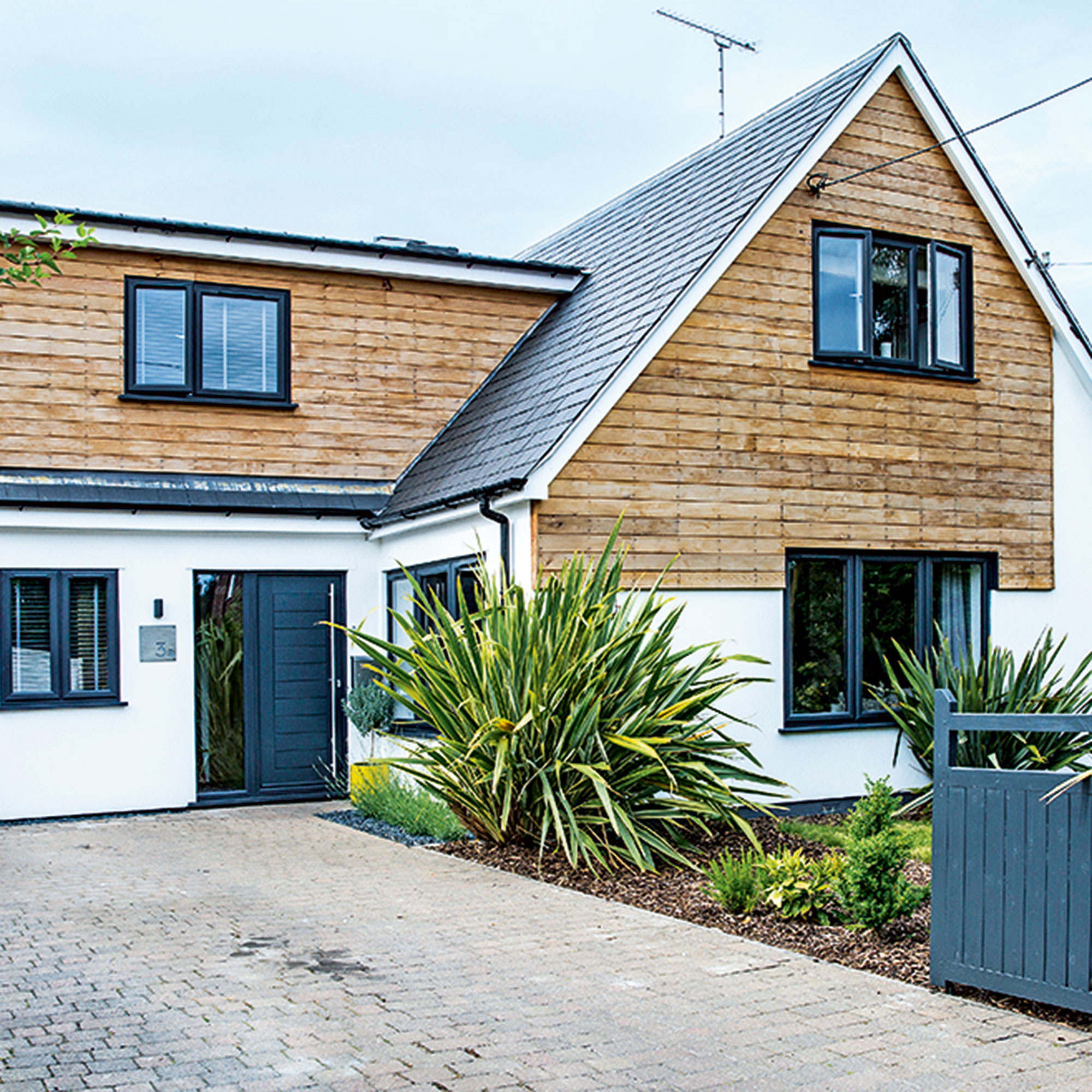
Roof tiles made from fibre-cement are often chosen as a cost-effective alternative to authentic slates. The bulk of the savings, however, are typically made from the installation rather than the units themselves – the uniformity of the tiles means they’re easier to fit and will save your roofer time, as they won’t have to grade and sort the tiles as they would when installing genuine slate tiles.
On the plus side, fibre-cement units are suitable for lower roof pitches than real slate tiles would be. They’re cheaper, too – which is good news if you’re working to a tight budget! The price depends on how many roof tiles you need per m2, which will depend on the pitch of your roof. Expect to pay from £3 per unit.
The uniformity of fibre-cement tiles means they’re a good fit for modern homes, though it’s worth bearing that unlike slates, tiles made from this material will fade in colour over time. Plus, if you’re after the unique surface texture of genuine roof slates, fibre-cement might not be the best fit for your project.
Expect a service life between 20 and 60 years for a fibre-cement roof that is well-maintained and periodically cleaned and inspected for loose or damaged tiles.
Stone
Other natural stone varieties, including limestone and Yorkstone, are ideal for establishing a characterful aesthetic. Tiles of this type are often viewed favourably by planning departments when being used in areas where locally quarried stone is the vernacular style. Similarly to clay and slate, natural stone tiles are through-coloured, so they won’t fade over time. Plus, they’re extremely strong and durable.
As with other roof tiles, it’s worth checking your stone roof a couple of times a year for moss growth. Plus, the eaves and gutters should be cleared of debris regularly. A well-maintained stone roof will last 100+ years.
Natural stone is a premium option – expect to pay a minimum of £80 per m2. The greater cost means this type of tile is only really worth it for heritage or listed homes, and those in areas where it’s required to fit in with the local vernacular (e.g. limestone tiles in the Cotswolds).
What kind of roof tiles do I have?
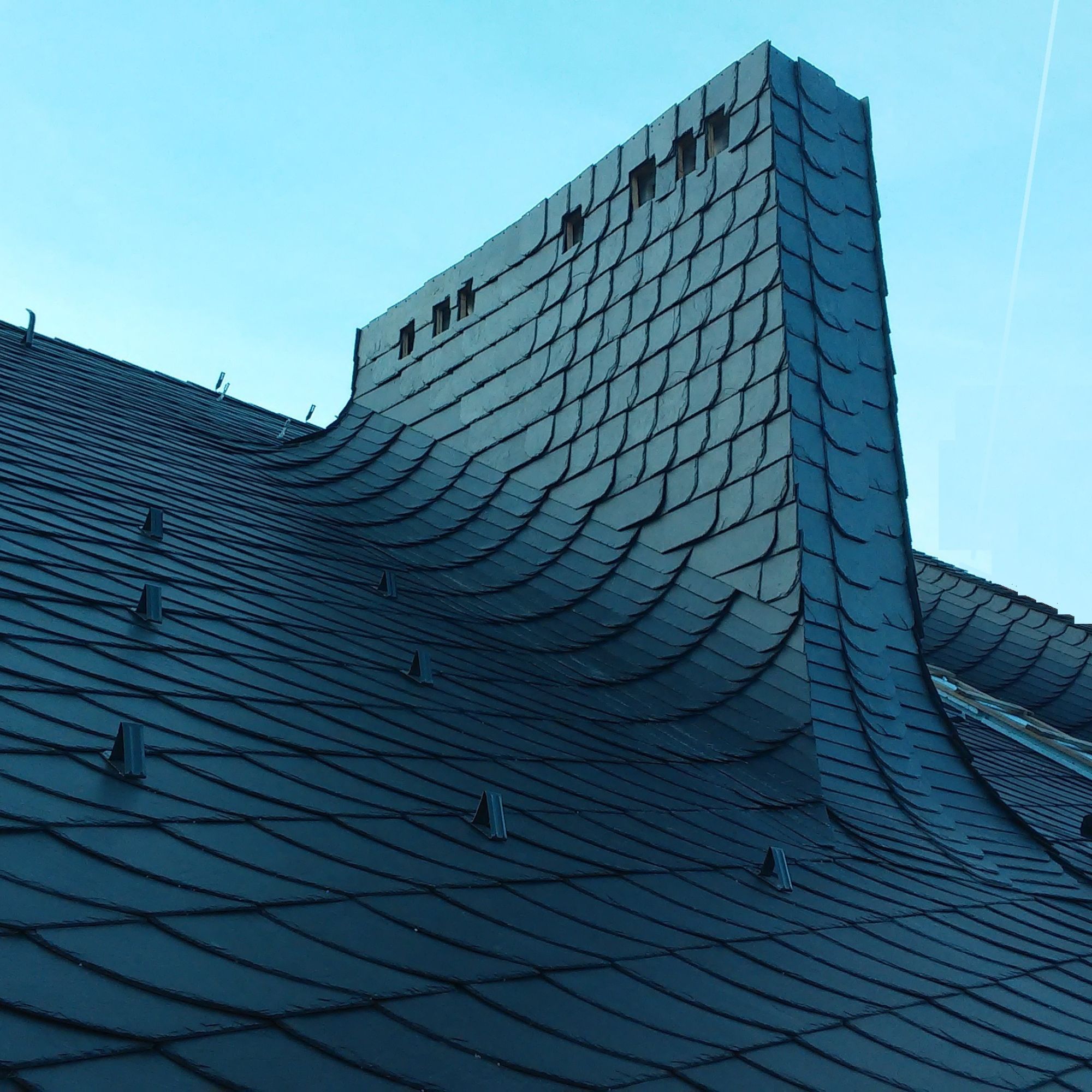
Whether you’re re-roofing the whole house or simply replacing a selection of damaged tiles, it’s important to select the tile that’s going to best match the property – especially if your works fall into the latter category.
The most common roofing materials used in the UK are clay, slate and concrete. So, it’s likely that if your home has a tiled roof, it’ll be made from one of these three materials. While concrete is more common in modern homes, slate was a popular solution for houses built in the Victorian era.
Traditional clay roof tiles come in a variety of colours, including red, brown and grey – so look out for these hues across the surface of the unit. Concrete also comes in an array of colours and may have a slightly mottled colour and texture. Slate tiles may have more of an irregular shape, and a colour in the grey/purple/green range. If you’re unsure, consult a professional roofer.
It’s also worth bearing in mind that some types of roof tile are synonymous with certain areas of the country, as the predominant aesthetic is based on which raw materials are sourced locally. For instance, if you live in Wales, Cornwall or Scotland, it might be more likely that you have a natural slate roof. Homes in the Midlands, however, are more likely to have clay roof tiles. Traditional houses in the Cotswolds may be topped with characterful limestone tiles.
The shape of the tile can be informed by the region, too. For example, houses the south-east of the country (particularly Kent) are known for peg and plain tiles, whereas homes in Norfolk and up the east coast are oven topped with pantiles, which feature a distinctive S-shaped profile.
To work out your budget, you'll need a clear understanding of how much a new roof costs. Fortunately, our comprehensive guide can help.







